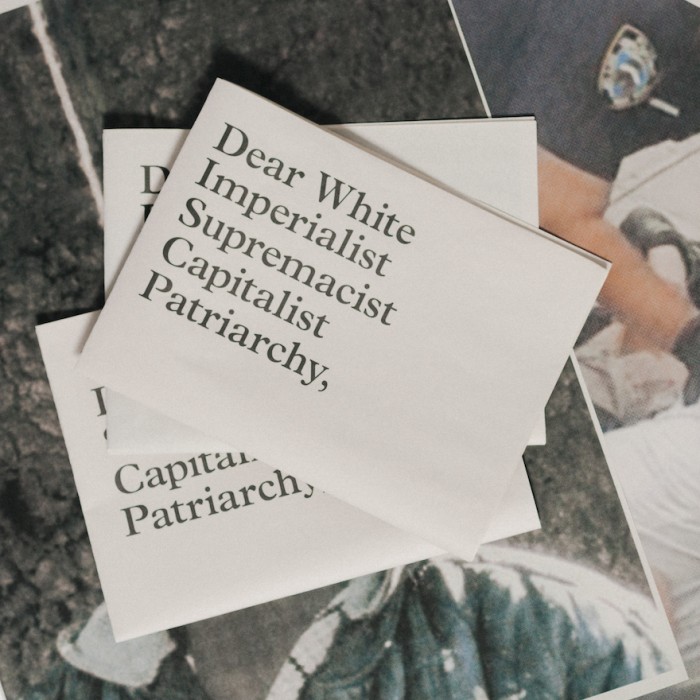Inyegumena Nosegbe’s Dear White America looks at the black body as a site of violence in America where at least 303 black people were killed by police in 2016. It’s a collection of newspapers addressed to white supremacy, a powerful system of oppression. We spoke to the Nigerian artist about art as a method of reflection and a call to action.
“I had a lot of thoughts at the time when I was ideating for the project,” says Nosegbe. “I was so deeply hurt and affected by the amount of police brutality that was going on during that summer [2015]. Nearly 102 unarmed black people were killed that year. Still hard to believe. It felt deeply personal and I wanted to figure out a way to inform folks outside of our community about an issue that was literally killing us.”
Each copy of Dear White America contains a short body of writing and is signed off with the full name of a victim of police violence. When unfolded, the newspaper transforms into a poster that shows an image of the victim at her/his time of death. It includes high-profile cases such as Trayvon Martin, Sandra Bland and Michael Brown – all of which sparked national protests and dominated international headlines.
Through its design, the project seeks to give incomprehensible data a tangible form. For instance, fewer than one in three black people killed by American police in 2016 were suspected of a violent crime and allegedly armed. Each newspaper represents one victim.
“So, the idea is to have as many newspapers as there are victims of police brutality. That way, the data becomes tangible and (hopefully) illustrates to people the seriousness of the issue.”
She adds, “I knew that I wanted to create something tangible, something that people would have to interact with and hold. I decided that a newspaper would be the perfect form. One thing that I think is particularly strong about its form is the fact that it requires the recipient to physically unfold it then open it.”

A number of artistic endeavours have sought to shed light on this issue. Most recently, white liberal artists have come under fire for creating works that centre on black death. According to Afropunk contributor Hari Ziyad, while the works may be well intended, it cannot be ignored that in wrong hands “black death becomes less a call to awareness, more a titillating spectacle, using non-Black media and galleries to recreate images of it with no regard to the fact that they were once loved.”
Reflecting on her own project, Nosegbe adds that the intention of an art piece is dependent on who the creator is. “While black traumatic experiences should never be exploited, I believe that it is important to show the reality of the black experience and if you must include certain graphic images or language to truthfully and accurately illustrate a particular narrative, then that is what has to be done.
“Dear White America definitely reflects this. I was deliberate in my selection, editing and cropping of the images that you see. An integral part of the project is showing the vulnerability of the black body, particularly when it comes in direct contact with white supremacy. I chose to show victims of police brutality at their most defenceless and powerless state: moments just before/after their deaths.”
Nosegbe is one of many afro-futurist artists in the diaspora. As a way to look ahead without western ideals of African art, Afrofuturism lends itself to many mediums.
“The most appealing part about Afrofuturism is its ability to bring people together, to give young black folks hope, to reaffirm our strength and perseverance, and to celebrate our culture,” says Nosegbe. “I strongly believe that Afrofuturism is a way of being – to live unapologetically in your blackness.”







